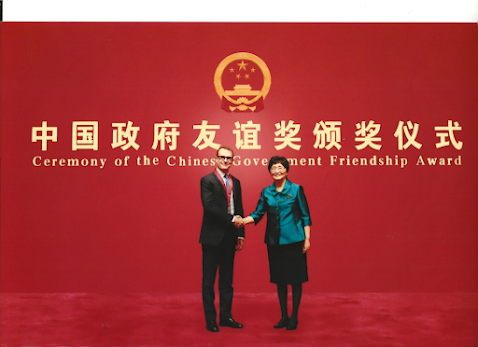Deputy Secretary General of CBCGDF Reviews the Classics: Preface to the Chinese Edition of Petrov's "The Fixation of Quicksand" (1960)
Recently, I published "Grass Grid, Who Invented It? Thoughts from "Sand City Random Notes": National Self-confidence Is Seeking Truth from Facts". After this, an enthusiastic expert recommended me to read the book "The Fixation of Quicksand" by М·П·Petrov. Here, I am very grateful to Director LU Qi of the Institute of Desertification, Chinese Academy of Forestry Sciences for providing these valuable historical materials!

The idea of science will not be buried by the wind and sand of history. Fifty years have passed since the United Nations Conference on Combating Desertification in Nairobi. In the past half a century, people's understanding of nature has been greatly improved, and various new cognitions have also emerged. Although sometimes there may be some mirror changes(The shadow in the mirror changes with the change of external objects) that make some facts confusing, such as the question "Who invented the grass grid?" Only after reading history can we really find the answer and keep us from being blind. At this time, we must be more faithful to the original work, read the original work, respect history with humility and broad-mindedness, and strengthen our national self-confidence.
Published in 1960, this Chinese translation of "The Fixation of Quicksand" can also be used as a wealth of knowledge for our ecological civilization construction. Reading history makes us wise. Under the background of the adjustment of disciplines in our country and the addition of "a first-level subject of soil and water conservation and desertification control" in the category of agricultural subject, we must uphold the spirit of seeking truth from facts, learn from history. In international exchanges, we must learn from others and accumulate experiences. It is still meaningful to revisit this monograph by the former Soviet expert M. П Petrov today. Now, let's take a look at the first part of the book:
China has a large area of quicksand, not only in the Tarim, Tengger, Qaidam, Alxa and Ordos deserts, but also in grasslands and subtropical regions. All these quicksands are historical heritage of the past. Quicksand in many areas, under the action of the main northwest wind, has caused a threat of sand burial to farmland, villages, water conservancy projects, highways and roads. Especially in recent years, due to the large-scale development and utilization of rich natural mineral deposits in the central Asian desert area, large-scale reclamation of wasteland and construction of railways, the hazards of quicksand appear to be more serious.
In order to quickly eliminate the harm of quicksand to the national economy, the Chinese government have proposed to forestry workers and people in sandy areas the task of working out a plan for sand fixation and afforestation in the shortest period of time.
In recent years, China has carried out large-scale research on the natural characteristics of deserts and semi-deserts through field surveys and positioning observations. The results of these works show that the desert areas of Central Asia, especially the eastern part of the desert areas, which are harmful to the national economy, have forest plant conditions suitable for the requirements of sand fixation and afforestation. This conclusion has also been confirmed by the research results of the sand control scientific research stations in Shaanxi, Gansu, Ningxia, Qinghai, Xinjiang and Inner Mongolia provinces (regions) in Northwest China and the experience of the people in sand fixation and afforestation.
At present, Chinese scientists, forestry workers and people in sandy areas are facing an important task: this is to carry out more extensive sand fixation and afforestation work under the general principle of more speed, better cost and less cost. To this end, it is necessary to train a large number of skilled sand-fixing and afforestation cadres and vigorously publicize the most advanced and effective sand-fixing and afforestation methods among residents.
I am glad to know that the translation of my book "The Fixation of Quicksand" will be published soon; at the same time, I also hope that this book can play a role in promoting the Chinese people's great and noble cause of transforming and utilizing the desert.
Professor M·П Petrov, Academician of the Academy of Sciences of the Turkmen Republic of the USSR
March 1959 in Beijing

Original article:https://mp.weixin.qq.com/s/sM3jdfzxfA43MtV4-3MeFw
Translator: Daisy
Checked by Sara
Editor: Daisy
Contact: v10@cbcgdf.org; +8617319454776

Contribution
Do you know? CBCGDF is a non-profit organization. We rely on crowd-funding and donations. You have the opportunity to help us to advance biodiversity conservation. Donate TODAY to power up the movement to make it a better world for all life.
https://www.paypal.me/CBCGDFChina
http://www.cbcgdf.org/English/ConfirmDonaTion/0.html



Comments
Post a Comment